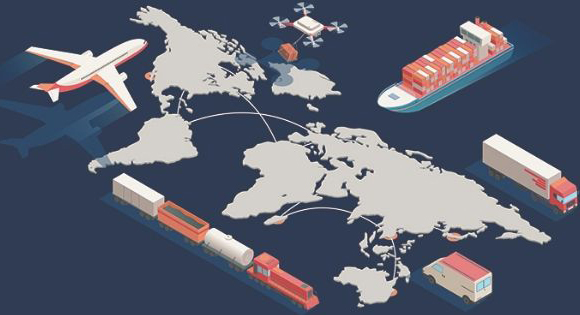Development of seaports and logistics in the Mekong Delta: Visionary development mechanisms and policies are needed
22/03/2022With the existing bottlenecks, experts participating in the seminar “Development of seaports and logistics in the Mekong Delta – Mekong Delta” said that for long-term development, there must be an asynchronous solution and in the immediate future, there must be groundbreaking solutions to meet the needs of the above development.

According to the World Bank (WB), inland waterway transport plays a key role but lacks serious investment. Specifically, the investment budget for inland waterways decreased from 2-3% of the total transport investment budget in 2011-2015 to 1.2% in 2016-2020. Therefore, although the Mekong Delta has many advantages and great potential to develop waterway traffic with the system of creek rivers, with a total length of nearly 28,000 km, currently, inland waterway transport only plays the role of gathering and collecting goods with a very limited scale.
According to the World Bank study, Vietnam’s logistics costs are equivalent to 20.9% of GDP; transport costs account for about 59%. Currently, the Mekong Delta has an annual demand to transport import and export goods (export) of about 18 million tons of goods, however, 70% of these goods must be transported to major ports in Ho Chi Minh City. Ho Chi Minh City and Cai Mep port (Ba Ria-Vung Tau) cause higher transport costs for enterprises from 10-40% depending on each route.
However, the Mekong Delta region still lacks key logistics centers and satellite central systems, empty container yards, warehouse systems in ports… Therefore, the goods must be transported through many locations and put on the city. Ho Chi Minh City to export to other places. Most of the import and export goods must be transshipped through Cat Lai ports in Ho Chi Minh City and Ba Ria – Vung Tau’s Cai Mep-Thu Vai caused a lot of time and costs, affecting the competitiveness of goods in the market.
Speaking at the seminar, Mr. Pham Minh Hai, Institute of Strategy and Development of the Ministry of Transport, although the transport system and seaports of the Mekong Delta region have been invested in the past years, upgrading, expanding and dismantling the bottlenecks as well as opening domestic and international routes to the region, but there are still many bottlenecks in the port and road transport systems that have caused bottlenecks in the logistics chain leading to bottlenecks in the supply chain. Therefore, it is necessary for timely and effective solutions to improve the capacity of the seaport system and logistics chain, thereby creating incentives for socio-economic development of the Mekong Delta in particular and the whole country in general.
Specifically, Mr. Pham Minh Hai suggested that the planning of the whole region should be strengthened to create regional linkages; promote and improve the quality of planning work; improve institutions and policies to remove difficulties in investment of projects; create mechanisms for investors; promote investment in the construction of transport infrastructure in the Mekong Delta in the period 2022-2025; adjust the allocation and effective use of public investment resources; promote investment under public-private cooperation.
As for Dao Tri Hung, the Vietnam Maritime Administration recommends that the focus should be on renovating and upgrading the main sea-going ships in the area such as (stream for large tonnage ships into Hau river, Cua Xiao stream, Dinh An – Can Tho stream); developing seaports that need to be associated with cargo production centers, calling for offshore port investment to take on the role of gateway port, meeting the demand for direct export for the region; having a macro policy to attract investors; creating and training human resources for the seaport and logistics sectors.
In order to meet the expansion and development of export markets, the Mekong Delta region has an urgent need for the development of logistics services to serve agricultural and aquatic products of the whole region, with major logistics services such as transport, warehousing, goods preservation and value-added services. Specifically, cold storage services, irradiation, heat absorption for fruit products to ensure the quality of exports as well as distribution goods for domestic consumption needs.
From the perspective of the Vietnam Association of Logistics Service Enterprises (VLA), Mr. Nguyen Duy Minh, Secretary-General of the Association, said that there should be development policy mechanisms with the vision of the region, international vision (covering the Southeast Cambodia region), or rezoning Long An – Tien Giang – Ben Tre area should be associated with logistics activities in the Southeast region. In particular, in terms of macro policies, State management agencies need to have specific policies such as land funds, tax… for projects and investors in the field of logistics.
Source: Tap chi Doanh nghiep Hoi nhap
Must Read
You may be interested in


Development of seaports and logistics in the Mekong Delta: Visionary development mechanisms and policies are needed

Proposed ‘Bus container’ network to boots Delta Logistics








